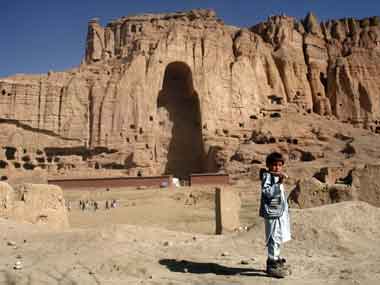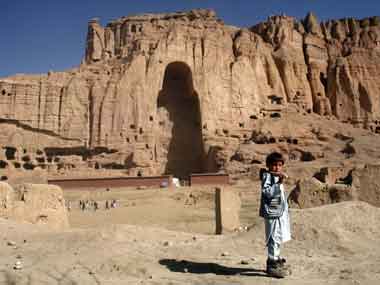Amidst all the drama around Osama bin Laden’s assassination, we shouldn’t lose sight of an important game-changing story brewing in the region, especially from an Indian perspective.
Sometime in August this year, some of the largest mining and steel companies around the world will make final bids for the exploration rights to the 1.8 billion tonne Hajigak iron ore mines in the war-torn Bamiyan province in Afghanistan.
There’s a good reason why my colleagues and I at Forbes India have been following this story very closely. So here’s the angle that’s worth tracking: 15 Indian firms are among a total of 22 firms bidding for these assets, considered to be among the biggest iron ore deposits available through an open market process. If they bid individually, they’d get swept aside by their bigger rivals, like Vale of Brazil.
So after much deliberation, our steel firms, at least five of them, are contemplating bidding as a consortium. And what’s more, the Indian government is likely to dip into its existing corpus for rebuilding Afghanistan and put up 15 percent of the acquisition cost. If the government sticks to its word, it could again be the first time that the government has supported an initiative such as this. (If you’d like a quick backgrounder, here’s a link to our recent story in the magazine (See story).
[caption id=“attachment_6220” align=“alignleft” width=“380” caption=“There’s gold in them thar hills. Goran Tomasevic / Reuters”]
 [/caption]
[/caption]
Now, while the concept of co-opetition, or collaborating to compete, is now widely understood, I believe this current move in Afghanistan represents a new narrative for India Inc. It’s not often that competitors in India are able to set aside their intense industry rivalries to come together for a larger cause. When we met Malay Mukherjee, the CEO of Essar Steel and one of the key architects of this consortium, he told us just how difficult it was for Indian entrepreneurs to change their prevailing mindsets. In the last decade, one such experiment-the Indian Steel Alliance-has already collapsed when Tata Steel walked out of it. So what’s changed? Quite simply, across the world, Indian players have realised the futility of being drawn into intense bidding wars for iron ore mines, particularly with the three global mining companies who control 70 percent of the iron ore reserves. So now, pushed to the wall, they’re finally coming around to the view that co-opetition perhaps does make economic sense.
Stitching together the new partnership hasn’t been easy. Fortunately, for the Indian steel industry, three key change agents have come to the forefront: Mukherjee, who worked as a senior executive for 15 years with Lakshmi Mittal’s Arcelor Mittal, Chandra Shekhar Verma, the new SAIL chairman, and V Krishnamurthy, the doyen of the Indian manufacturing industry and former SAIL chairman. They’ve been ably supported by PK Mishra, the current steel secretary.
Designing how the consortium works isn’t really that difficult. So far, while it looks like NMDC, India’s largest iron ore miner, will lead the Indian consortium, the partners will get the allocation of resources according to the investment they bring. And the NMDC-led consortium could include SAIL, Tata Steel, JSW and Essar, which is practically the majority of the Indian steel industry. This could give the Indian consortium more than a realistic change to pip the rest of the playing field.
While the public and private sector players may indeed succeed in forging an alliance, it’s the government’s role and its perceived ambivalence that needs to be watched carefully. So far, India Inc’s international expansion has largely been on its own steam. Unlike the Chinese, the Indian state, for most part, has chosen to watch from the sidelines.
This time, the steel industry is hoping that the government realises the strategic benefits of gaining access to mineral resources for an economy to maintain its trajectory of growth for the next 10 years. Without access to vital iron ore reserves, the India growth story could come to a grinding halt. If the bid goes to plan, the government could consider a long-standing decision to create a new multi-billion dollar sovereign fund that supports domestic companies to buy energy assets-oil, coal and iron ore-abroad. So far, there hasn’t been enough consensus within the government and in the public policy domain for a poor country like India to spend its monies on creating a sovereign fund to buy assets abroad, instead of using it to tackle the public welfare issues of education, health and infrastructure. Like all things in India, this is one of those larger ideological debates we tend to get locked into-without any hope of ever finding a viable solution.
On the Afghanistan bid, though, apart from the Prime Minister’s Office (PMO), there are three key ministries that will need to work together to make this joint bid a reality: steel, external affairs and finance. And their track record in the past of giving up turf wars to support industry action has been far from encouraging. Last week, I spoke to KV Kamath, the chairman of ICICI Bank and Infosys, who spoke of the intense frustration during his term as president of CII to get these different ministries to see eye-to-eye.
So even if private and public enterprises realise the value of such co-opetition, it may still be too much to expect the government to drop all its baggage and step up to the challenge. Of course, if you’re an optimist, it may make sense to make sense to wait for the ides of August.
Indrajit Gupta is the Editor of the Indian edition of Forbes, launched by Network18 in alliance with Forbes Media. Within a short span, Forbes India has emerged as the most influential business magazine in the market and set new benchmarks in journalism. Before joining the Network18 group, he was the Resident Editor at the flagship Mumbai edition of The Economic Times in Mumbai and before that, the National Business Editor at The Times of India. His grounding in journalism was built through his stints at Business Standard and Businessworld. Indrajit was nominated for the British Chevening Fellowship for Print Journalists awarded by the British Foreign and Commonwealth Office in 1999. He also won the Polestar Foundation Award for the Best In-depth feature Story of the Year in 2010. He is an alumnus of the SP Jain Institute of Management and Research, Mumbai and also holds a B.Com (Hons) degree from St Xavier’s College, Kolkata.
)